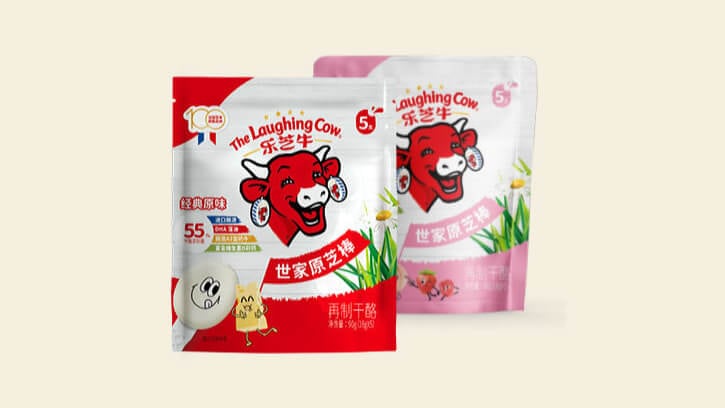The Bel Group as a whole is perhaps best known for its eponymous red-wrapped BabyBel round mini cheeses worldwide - but in China, the focus is largely on fruity versions of its Laughing Cow cheese cubes.
According to Bel China General Manager – Cheese Gorge Bai, Chinese consumers currently show a clear preference for such forms of sweeter flavoured products.
“Most consumers in big cheese-consuming countries prefer savoury flavours to their cheeses and associated products – but here in China, the preference is for fruity and sweet flavours to be incorporated into their cheese,” he told FoodNavigator-Asia after speaking at the recent Food and Beverage Innovation Forum (FBIF) in Shenzhen, China.
“Before we made this discovery, we had been selling the Laughing Cow cubes here in China for many years but with no major breakthroughs – as soon as we thought out of the box and integrated fruit juices to develop the fruity range, the products started doing extremely well.
“So the lesson we have learnt here is that there is no point in blindly copying what has done well or sold well in other markets, as there are many local and cultural tastes that need to be accounted for.”
Bel’s cheese cubes are made with precise technology core to the company’s development, enabling it to differentiate itself in terms of taste and texture from its competitors. Nevrtheless, Bai believes that it is necessary to coax consumers to grow more accepting of both sweet and savoury cheese products.
“Cheese innovation should not be limited to just innovating for local tastes, but instead done together with the introduction of western concepts as well as those are the most conventional flavours,” he said.
“It is possible to do both together, and we don’t expect everyone to be accepting of every single concept, but converting the local palate to accept more concepts is key to capturing more consumption occasions and thus expanding the size of the pie.
“Indeed, market expansion is what we should all as part of the cheese industry be looking to do, and not placing so much focus on competing in such a small space – in general it will take time for savoury cheeses to go mainstream here, but it can be done.”
The nutrition argument
The other route to significant market expansion will be to play the nutrition card, said Bai, especially with the government strongly advocating for increased public dairy consumption.
“The good thing is that cheese is in general considered a healthy, high-quality category of products here in China which is in tandem with local consumer demands for such products,” he said.
“If you think about it, cheese is essentially a concentration of the essence of milk, so as milk consumption increases for the nutritional benefits, so will cheese consumption.
“As consumers upgrade their tastes and preferences, freshness is likely to become more and more important and UHT milk is likely to have problems as the processing becomes viewed as negatively impacting nutrients – but cheese can alleviate this concern as it offers all the goodness of milk without that worrisome step.
“Additionally, we also know that the entire process of cheese production leads to a lot of lactose being used up along the way, so there are far less allergenic concerns yet high protein and calcium content.”
Along these lines, he stressed the importance of cheese being one of the most affordable snacking options in the market when it comes to children and senior consumers, considering the high concentration of nutrients it can provide.
“It’s a size versus price issue – there are many cheese products for children but rarely any for the elderly, and this is because many consumers are still not able to spend the money they are spending on their children for their elders, but if the category was overall more affordable then there would be scope for this,” he said.
“So affordability is a very big part of our objectives in order to reach more consumers – and to this end, there needs to be a lot more research and innovation to develop suitable formats to achieve this end.”





